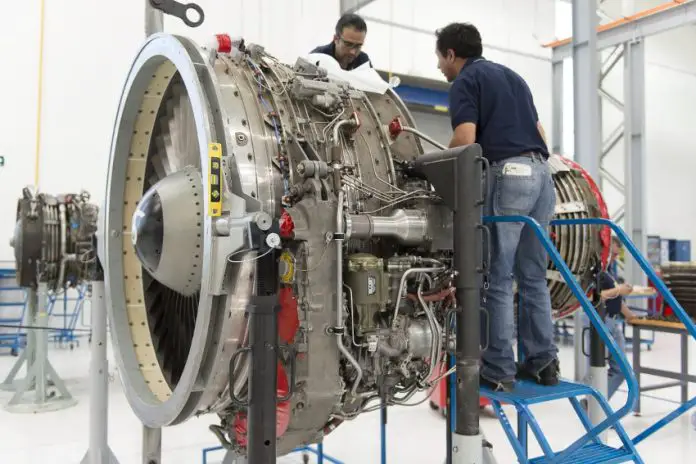Economic activity in Mexico has rebounded since the COVID-19 pandemic, benefiting the manufacturing sector due to opportunities created by the disruption of supply chains, including in the aerospace sector.
The aerospace sector is one of the youngest industries in Mexico. It has been around for roughly 18 years and in that time it has managed to employ around 60,000 workers to date and export US 8 billion of goods in 2022, a significant advance in the recovery of this industry, which was affected by pandemic restrictions that left practically 50% of the global fleet grounded.
Mexico has been characterized as an attractive country for the development of this industry due to the quality of its workforce, but that is not all. The industry success has been such that in recent years it has attracted engineering, design, development and research projects of large global firms.
Carlos Robles, president of the Mexican Federation of the Aerospace Industry (FEMIA), a nonprofit organization that represents at a national and international level the main aerospace companies established in the country, one of the main catalysts of this industry was Bombardier, which, upon its arrival in 2006, began to develop an entire strategy around supply and talent to support its operation.
“They developed between 10 and 12 suppliers at the time, which meant that upon the arrival of another OEM [original equipment manufacturer] or Tier 1 [direct supplier for OEM] company they already found suppliers in Mexico. This was like a snowball that began to generate inertia and attracted attention to the country as a potential market for global companies due to the benefit of logistics costs and the efficiency of the Mexican workforce,” Robles explained.
Along with the development of this industry, the Aeronautical University in Querétaro (UNAQ) was created and in other educational institutions in the country, from universities and technical schools, specialized engineering programs in the aerospace sector were developed.
Over time, the snowball effect translated into a greater number of companies, investment, a greater volume of production, the generation of new jobs and a position in the global market as the 12th largest exporter. The objective of FEMIA is to position Mexico within the top 10 worldwide and introduce companies to the space sector.
“The products made in Mexico are of high added value and complexity… Of the most complicated component [sic] that an airplane can have, such as turbine parts, doors —in structural terms —are in Mexico; from electronics, avionics, composite materials, machined parts and it is done with very good quality,” Robles said.
This, in addition to cost reduction through efficiency, innovation in continuous process improvement, logistics costs, and the availability of qualified personnel, are the main assets that make Mexico a strong player in the market and attractive in the face of readjustment of supply chains after the pandemic.
“We see a growing number of companies interested in settling in the country,” Robles said. He explained that nearshoring in the aerospace sector has been observed in three different areas. The first area includes companies seeking to establish themselves in the country. Another encompasses those companies seeking to increase their operating capacity or implement new processes in their plants in Mexico, such as Bombardier, which seeks to increase the manufacturing of aerospace parts, and Safran, which plans to invest in different plants it has in Mexico.
The final area includes firms that do not have a presence in Mexico but seek to locate or develop supplies in the country.
In this way, at FEMIA, Robles added, they are looking for a way to accelerate these types of processes so that they are consolidated faster.
“There is a clear interest in this macro trend of nearshoring, which is having a positive effect on the industry,” he added.
In Mexico there are just over 360 companies active in the aerospace sector, but when will there be a Mexican plane? Currently, there is a 100% Mexican aircraft in production. This is the Halcón II, which is manufactured by the company Horizontec in the state of Guanajuato. This aircraft is a two-seat light sport aircraft (LSA) that can be used by flight schools, security or recreational purposes.
And just as Horizontec designs, develops and manufactures light aircraft, it would not be surprising to see a fully Mexican commercial aircraft manufacturing company emerge in the future.
